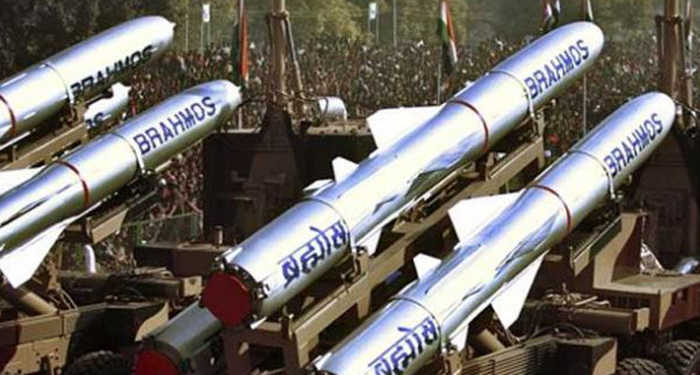India deploys Brahmos SuperSonic Cruise Missile to counter Chinese military buildup
As far apart as it sounds, the calm and serene valleys of Arunachal Pradesh are going to house batteries of the world’s fastest supersonic cruise missile. Part of a series of ramping up of defence and development works across the eastern frontier with China, the NDA govt. has sanctioned the deployment of BrahMos Block-III missiles to the 864 Regiment of the Indian Army’s 41st Artillery Division. This is the fourth regiment in the Indian Army that will boast the possession of the renowned missile. Interestingly, this move follows the ‘go-ahead’ given by the Ministry of Defence for a conspicuously strategic road that connects the western and eastern extremities of Arunachal Pradesh- Tawang to Vijaynagar.
According to authorities, the missiles come with “steep dive capabilities”, enabling it to hit targets on the reverse slopes of the mountains that are hidden from the frontier. A steep dive capability of 75 degrees makes it a prime deterrent in mountain warfare. It must be noted that the work on fine-tuning BrahMos for mountain warfare was on for years. The Army successfully tested the steep dive capability on May 8th, 2015. As per a source cited by the Times of India, “Defence scientists are already working on achieving a 90-degree steep-dive capability, which in the future can lead to acquiring an aircraft carrier-killing capability”. Such a development can put BrahMos in the league of China’s DF-21D anti ship ballistic missile- famous for its carrier killing ability.
It is lately being acknowledged that beyond its crude fire power, BrahMos as a product in the international defence market poses a considerable threat to the Chinese. One of the Chinese neighbours that are already locked in the bitter tussle over the South China Sea, Vietnam, has evinced interest in BrahMos.
Talks are already on for the shipment of the missiles as there seems to be no apparent disagreement from the part of Russia. Such a proposition would give India a proxy opportunity to extend the reach of BrahMos to the interiors of China that are otherwise unreachable from Indian soil. Needless to say, the effective range of BrahMos had to be constrained to 290 km due the MTCR restrictions. However, the versatility of the weapon system can very much make up for the lack of an extended range.
The naval variant of the system is already installed in Indian Navy’s 10 frontline warships, with more under the pipeline. Besides, a couple of months back, a Sukhoi Su-30 MKI fighter jet of the Air Force underwent a successful test flight carrying a lightened dummy version of the missile for 58 minutes in Nashik. It is being reported that firing trials will be conducted by December 2016 and within the first four months of 2017 the deadly platform of Su-30 coupled with BrahMos will be readied. That two squadrons of Su-30 are based in Tezpur, Arunachal Pradesh which can reach the Chinese frontier in a matter of 15 minutes makes this new development apt for the current military posturing vis-a-vis China.
In this regard, the export options come as an icing on the cake. In addition to the earlier list of prospective customers, the news of the successful trial of BrahMos-integrated Sukhoi-30 has made waves in the defence world, grabbing thhttp://tfipost.com/2015/11/kiren-rijiju-nehru-and-the-great-betrayal/e attention of militarily advanced nations. This platform is being projected as a lucrative export prospect for India. From the strategic dimension, the unprecedented success story of BrahMos Aerospace has the capability to check the hitherto unchallenged muscle flexing by the Chinese military in Asia. Ultimately, as far as India’s domestic security is concerned, the prospect of the world’s fastest cruise missiles steep diving across the Himalayan mountains is a credible deterrence that can make the People’s Liberation Army think twice before engaging in a 1962-model skirmish.


































